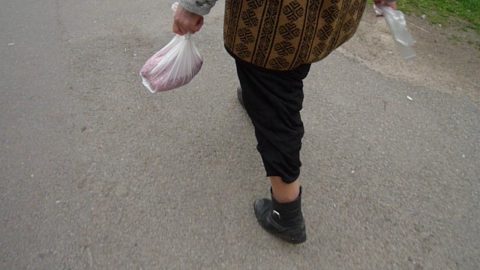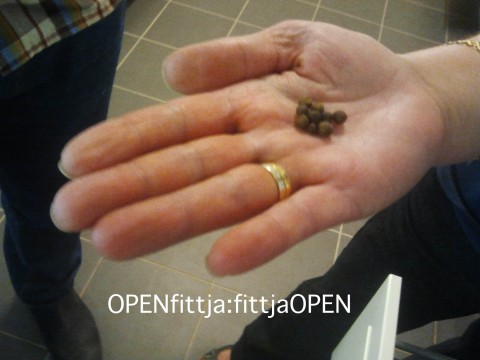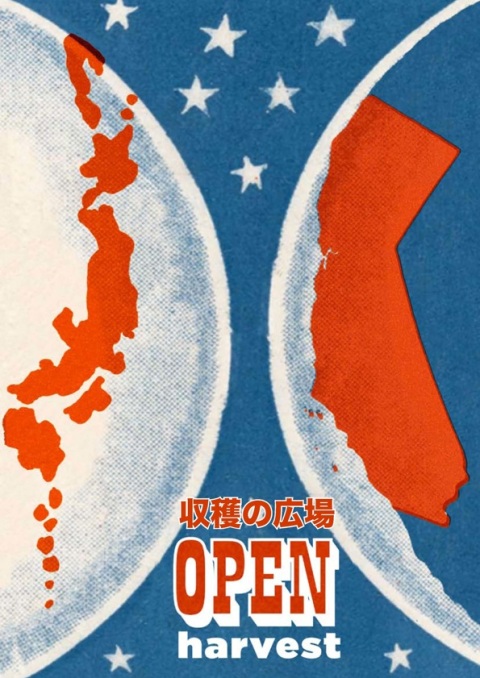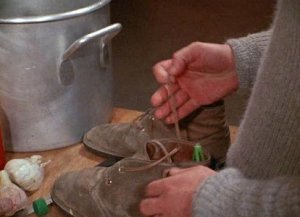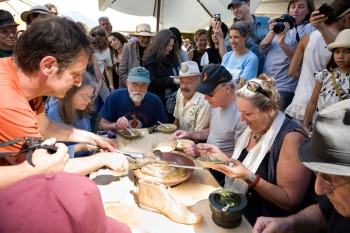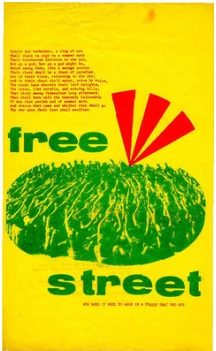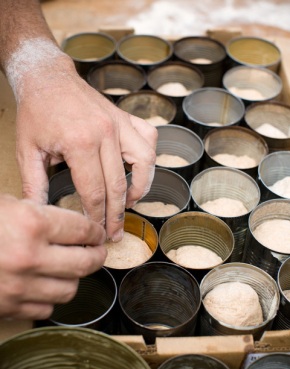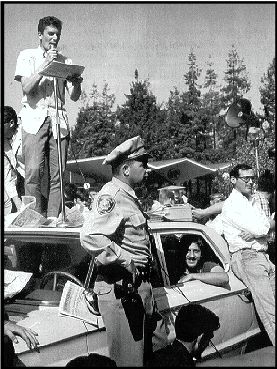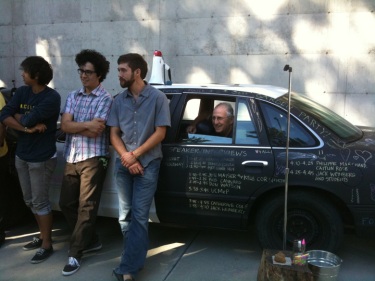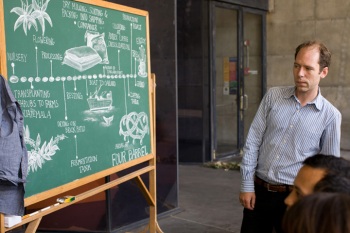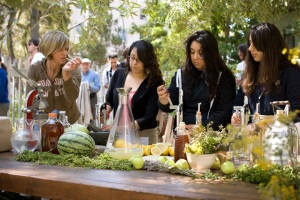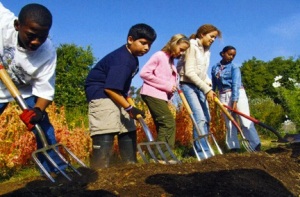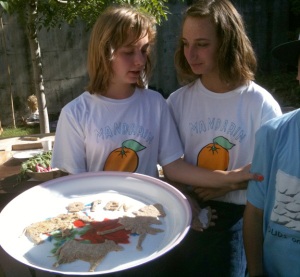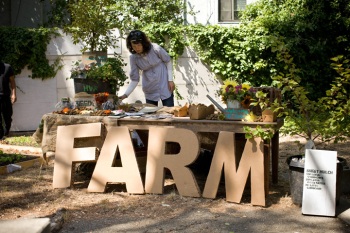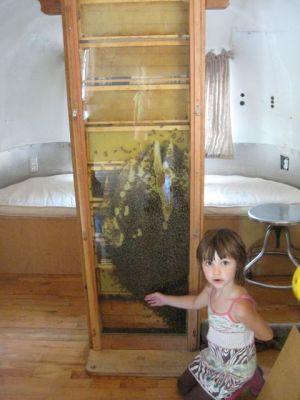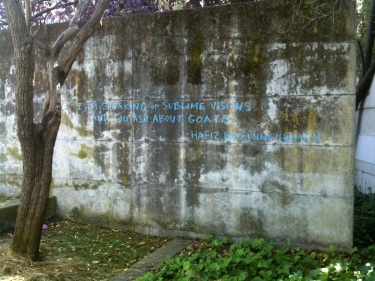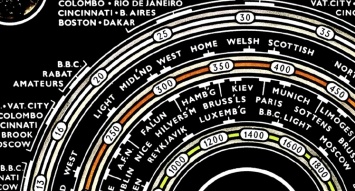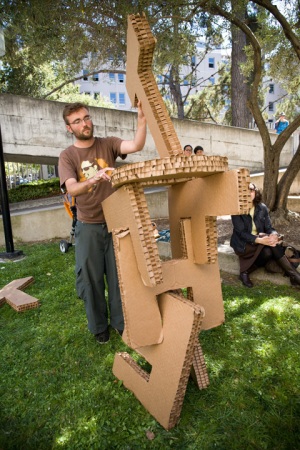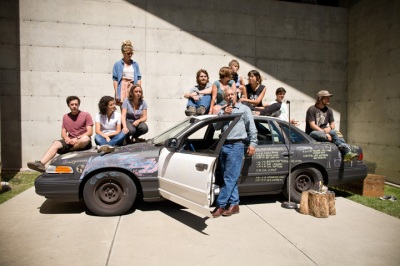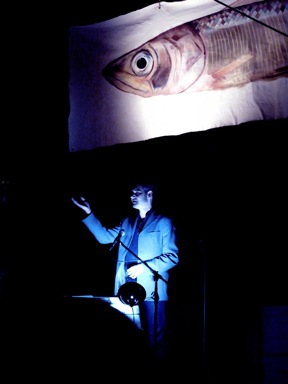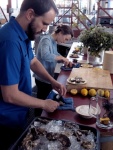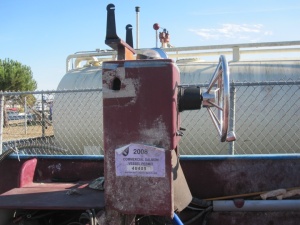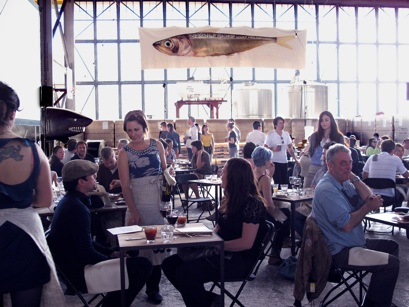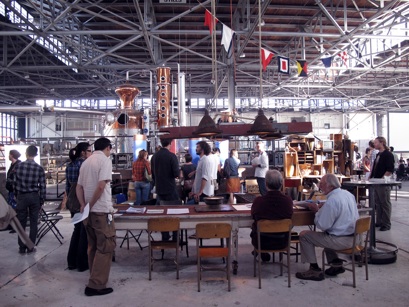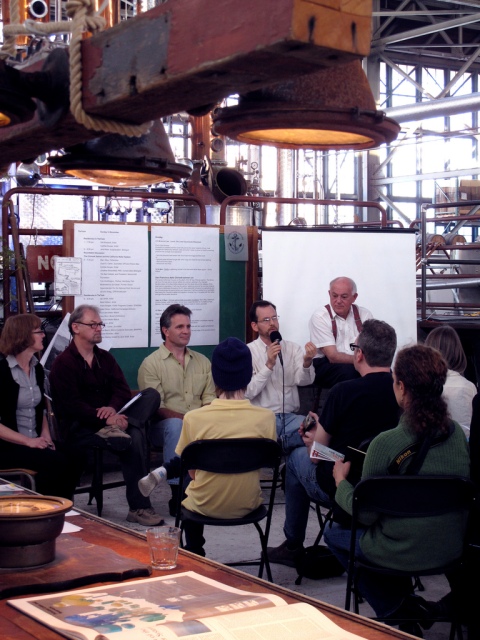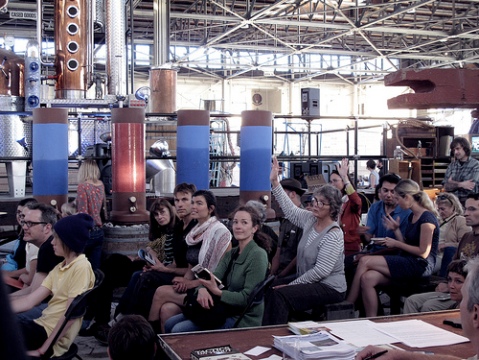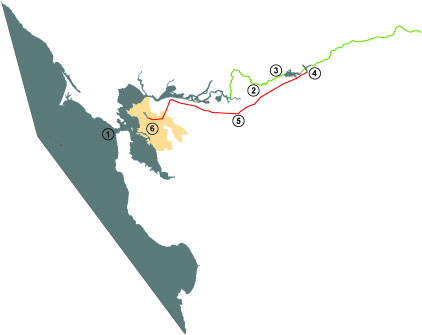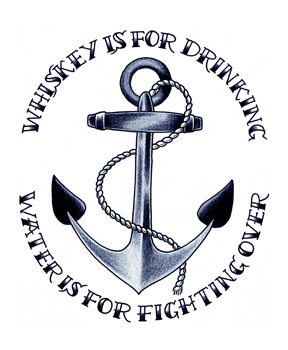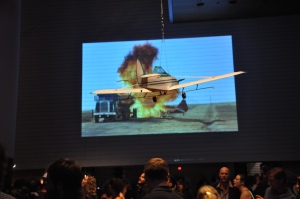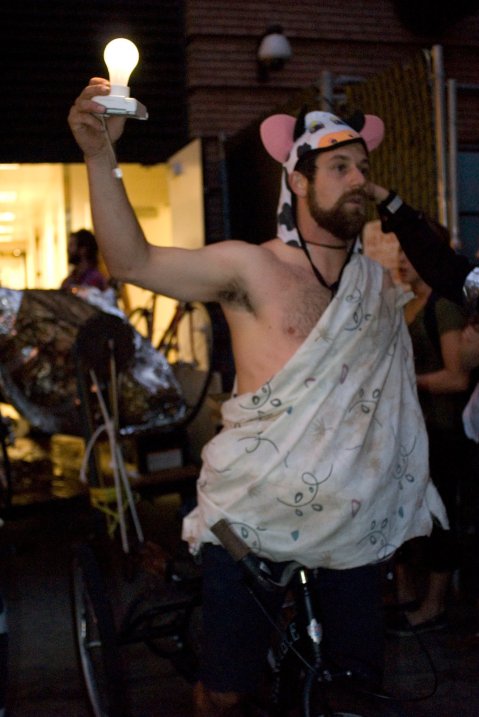OPENrestaurant now
July 31, 2016
Sam opened his own restaurant
The Ramen Shop
Sasha is the mother of Rosa
Howie is a father too
Amanda makes and teaches art
Chris S. teaches at Mills College
667 Shotwell
Stacie opened her own bakery
Little Bee Baking
Chris K. is flipping burgers
Kronner Burger
Valerie is the Exhibitions and Programs Manager at SoEx
Southern Exposure
Kelly shoots pictures and hangs out at the store
The Perish Trust
and Jerome is living in Tokyo
…
Find OPENrestaurant in Venice
June 1, 2014
For the Botkyrka Konsthall’s Fittja Pavilion at the Venice Architecture Biennale, OPENrestaurant presents Variations on a Caffé, a continuation of work done in Fittja, Sweden over the past two years.
Come find us June 5, 6, and 7 in the Fittja Pavilion, Serra dei Giardini, and taste some of the food and stories neighbors have contributed to the Fittja Kitchen and Caffé! The exhibition will be on view in Venice through September 7.
More information on OPENrestaurant in Fittja
Or visit us in Fittja in the fall for the new Art and Architecture Biennale, opening in Fittja September 13!
OPENrestaurant in Sweden
May 26, 2012
OPENrestaurant is in Fittja, Sweden (outside of Stockholm), where the Botkyrka Konsthall runs the Residence Botkyrka.
Above, Leila Sözen of Verdandi, a women’s resource center in Fittja, holds out a handful of krudpeppar, a large variety of mild black peppercorn she uses in the community kitchen and bakery.
OPENfittja:fittjaOPEN
… for more information.
OPENrestaurant in Japan
September 16, 2011
Follow us to Japan!
http://www.openharvestjapan.com/
.
To support farms and fisheries across Japan, OPENrestaurant traveled to Japan during rice harvest season, visiting farmers, artists, fishermen, cooks, craftsmen and designers. Together with Tokyo-based Food Light Project, OPENrestaurant organized a two day event, OPENharvest, at Content restaurant in the Museum of Contemporary Art Tokyo on November 2 & 3. This event was preceded by a series of smaller dinners and events in different locations throughout Tokyo.
OPENed: education as experience
June 26, 2011
What if this was a classroom
What
.
To learn without desire is to unlearn to desire
.
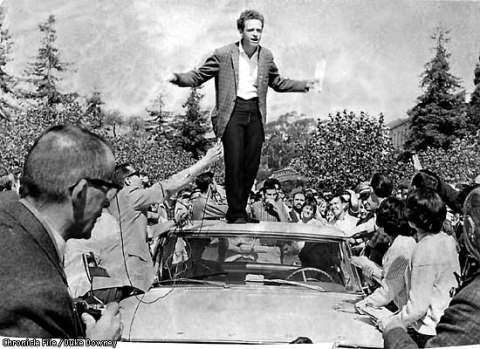 Mario Savio on the roof of a police car in Sproul plaza – 1964
Mario Savio on the roof of a police car in Sproul plaza – 1964
Chez Panisse 40th birthday
Berkeley Art Museum
FRIDAY, AUGUST 26 ~ Unveiling Ceremony ~ 7 to 8 pm ~ $100/$45.
The Smithsonian Museum unveiled Alice Water’s portrait to be included in the National Portrait Gallery. OPENrestaurant collaborated with artists Ann Hamilton and Sherry Olsen to create a performance installation which included a video projection, a parade and speeches as well as food catered by Paula LeDuc and cocktails by St George Spirits. This event was a fundraiser for The Edible Schoolyard.
More about Chez Panisse 40th Birthday
SATURDAY, AUGUST 27 ~ OPENeducation ~ 11 am TO 5 pm ~ FREE EVENT. Everyone welcome !
From the ‘knowledge factory’ to factory farming, homogenization has traded diversity for efficiency. Eager to point to alternative strategies, new and historical, OPENrestaurant proposed an educational experience based on curiosity, play, and desire. Transforming the grounds of the Berkeley Art Museum on the UC Berkeley campus into an open classroom and living kitchen, visitors were able to shape their own education, participating in the creation, production, and consumption of food as collective performance. Part demystification of the lore of the kitchen and part tracing the genealogy of Chez Panisse and its influences – from the free speech movement to Edible Schoolyards – OPENeducation invited participants to collaborate with students, educators, farmers, cooks, and artists in constructing the elements of a lunch menu in a series of independent classrooms.
.
The work of art of the future
will be the construction
of a passionate life
Raoul Vaneigem
Reheating Werner Herzog’s shoe
Inspired by Les Blank’s movie “Werner Herzog Eats His Shoe” participants, together with chefs Nicole LoBue, Kuulani Imira, and Suzanne Drexhage make a simple summer vegetable soup flavored with a pigskin shoe handcrafted by Al’s Attire
Students from local Waldorf schools provide expertise on knife care and skills along with Josh Donald from Bernal Cutlery, teacher Monica Leicht from the Friends of Potrero Hill Nursery School, and artist-curator Marina McDougall.
Served with pesto
Les Blank and friends re-eat Werner Herzog’s shoe
.
Digger’s bread bakery
In the mid-60s the Diggers in San Francisco proposed a form of ‘community anarchism’ in which they offered free food, medical care, and street performance. They also baked and gave away bread, and were rumored to have introduced whole-wheat flour into US hippie counterculture. Artist Chris Sollars , Steve Sullivan from Acme Bakery and James Whitehead from Fist of Flour bake Digger bread in cans while David Simpson and Jane Lapiner recount stories from their experience as Diggers
.
Free speech police car
Inspired by the Sproul Plaza events of October 1964 and Mario Savio’s speech, a police car is the stage for free expression. The car is covered with chalkboard paint and attendees are encouraged to write on it. A series of talks, interviews, and speeches is curated around food issues, education, and Chez Panisse’s early cultural influences. With the participation of Jack Wienberg, shown above seating on the back seat after his arrest, Twilight Greenaway, Bob Cannard, Les Blank and UCmeP, among others
Jack Weinberg seating in the back of the police car after answering questions from UC Berkeley students
.
Fourbarrel~Ojer Caibal school kitchen project
Fourbarrel and Jeremy Tooker talk about the Ojer Caibal school kitchen project in Guatemala and offer samples of their coffee. Small holding farmers from the community each contribute coffee grown at or near their homes – coffee plants tended with the care given to a small garden. This project also includes community improvements, providing cooking appliances, clean water, waste management, and improvements to the school. These improvements benefit the whole community of approximately 300 families (1300 inhabitants) all from indigenous (Kaqchiquel) descent who depend fully on agriculture for subsistence.
Fourbarrel purchased the entire blended lot from these 61 tiny coffee gardens, for which they attached 25 cents per pound to the already agreed price, to be used to
build a new kitchen for their school.
.
Lemonade stand
Artist Alison Pebworth with students from METAS at Contra Costa College create custom sodas, lemonade, and aguas frescas with herbs, fruits, and honey from edible schoolyards. METAS students discuss do-it-yourself alternatives to mass-produced beverages. METAS is an enrichment program that helps Latino students to achieve personal and higher education goals
.
OBUGS pickle workshop
Oakland Based Urban Gardens prepares vegetable pickles. OBUGS functions as a network of schools, neighborhood gardens, green spaces and farmers markets that offer in-school and after-school programs as well as a summer camp
.
Edible Schoolyard bicycle powered wheat grinder
Students from The Edible Schoolyard will make chapati with local wheat ground by a bicycle powered flour grinder while discussing “Edible Education,” the relationship between school, the kitchen, and the garden. The mission of the Edible Schoolyard Project is to build a national curriculum around food for the American school system
.
Lettuce daybed
“If you don’t let us dream, we won’t let you sleep” (Indignados-Spanish protesters)
Inspired by both protestors of austerity in Spain and a conversation with the farmers of Little City Gardens, salad beds, after harvesting, will be transformed into daybeds for reading and dreaming. Hayes Valley Farm provides seed bombs, a salad starts and compost take-out plus answer questions about urban farming
Three sisters garden
OPENrestaurant planted a garden of corn, squash and beans, known as the three sisters, at the entrance of the museum. Planting the three sisters is an indigenous agricultural technique and one of the first lessons learned at the Edible Schoolyard. The three crops support each other and form a complete protein when eaten together. Corn is central to American agriculture
.
The Library
Mini-library with food-related books from the Chez Panisse Library and Moe’s bookstore plus a copy machine to make reproductions.
.
La Cocina
Salsa making with the metaphorical harvest of the three sisters garden with Dilsa Lugo from Los Cilantros. Dilsa and Caleb Zigas discuss La Cocina, a business incubator designed to reduce the obstacles that prevent entrepreneurs from creating successful small businesses
.
Airstream bee trailer
Rob Keller, from the Napa Bee Company, parks his trailer housing a live bee colony at BAM. He will be on hand for honey tasting and bee keeping education
.
Goat pen
Goat milking and processing with Jeannie McKenzie in a pen designed by John Bela from Rebar. Jeannie McKenzie is a music teacher and East Bay homesteader. Rebar is a San Francisco studio working at the intersection of art, design, and ecology
“I am speaking of sublime visions and you ask about goats” Hafiz
.
A Curious Radio
Bryan Welch and students from A Curious Summer, an alternative summer school in San Francisco, run a small radio station which will broadcast throughout the museum grounds with the help of small portable radios. The student will report on events, conduct interviews, and play music in between
.
Alphabet soup
A giant pile of large cardboard letters to be used to make words, phrases and … The letters spell a quote from the situationist Raoul Vaneigem: “The work of art of the future will be the construction of a passionate life”
.
Notebook
A free notebook, designed by Sasha Wizansky, describing the different elements of the event will be available to all visitors
.
Berkeley High jazz band
Composed of alumni of Berkeley high school’s prestigious jazz program, the brass band marches through the garden of the Berkeley Art Museum
.
Bob Cannard and his young farmers
The Citizens Laboratory: an offshoot of OPENrestaurant
April 1, 2011
In the spring of 2011, the Oakland Standard invited OPENrestaurant to propose a project for their program at the Oakland Museum of California. Overwhelmed by the events in the middle east, we decided to focus on the on-going revolution in Egypt, an interest beyond the scope of OPENrestaurant. As a result we proposed The Citizens Laboratory, a site for artists interested in engaging civic and urban life. Using similar strategies as OPENrestaurant, April’s Ful Night was the first event of The Citizens Laboratory.
Learn more about The citizens Laboratory
OPENwater
November 14, 2010
November 13 & 14, 2010
.
FISH STORIES
.
A wide community of people came together to tell the story of a little fish, the Delta Smelt, that tells the story of a bigger fish, the Shinook Salmon, that tells the story of the largest estuary on the America’s west coast, that tells the story of water in California.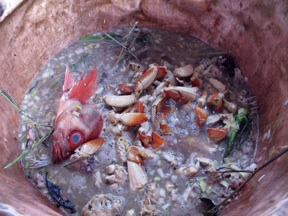
The list includes art curators, food preservationists, marine biologists, hydrogeographers, 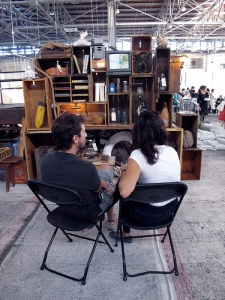 sound artists,
sound artists,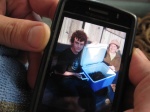 ceramists, servers, conservation biologists, dishwashers, antiques collectors, educators, architects, diners, cooks, musicians, fishermen, art directors, journalists,
ceramists, servers, conservation biologists, dishwashers, antiques collectors, educators, architects, diners, cooks, musicians, fishermen, art directors, journalists,
maitre d’s, a former superintendent for the National Park Service,
bakers, passer by, bartenders
sailors, video artists, warehouse workers, set designers, water activists, volunteers, foragers, textile designers, sound engineers, microbiologists, spirits distillers, performance artists, painters and an editor-in-chief.
…
Special thanks to Amanda Eicher, Rosie Branson Gill and Valerie Imus for curating The Tank. You can find a list of all the participants in their
FIELD GUIDE TO OPENwater
OPENwater on SFMOMA’s photostream
OPENwater on OPEN SPACE
.
Saturday
The Hydrological Cycle
The first day was an exploration of the Bay-Delta watershed hydrological cycle, the afternoon started with a class/presentation on water and its cycle, followed by events centered on preservation and salt, the harvest of which necessitates sea water evaporation, a major source of rain precipitation in California. The dinner followed the winter storm pattern, taking us from the ocean, across the Central Valley, to the Sierras and back through the river and delta system.
.
Army corps of engineers-Bay Model Visitor Center
.
Cured, Curated, Preserved
From pickles to paintings, what is the relationship between preservation and cultural change? In this round table discussion, experts in the fields of culinary history, art conservation, and marine health discussed the value of preservation. Within the ecology of each of these fields, we examined how and why we protect against some change in order to encourage other transformations.
Panel
Dena Beard, MATRIX Curatorial Assistant, Berkeley Art Museum~Christopher Richard, Associate Curator of Aquatic Biology, Oakland Museum of California~Jennifer Frazier, Cell Biologist and Project Director, Exploratorium~Peter Vorster, Hydrogeographer, The Bay Institute
Dinner
Briny consommé of Pacific seafood and seaweed
Risotto of rice from the Central Valley with duck raised on the rice fields and Sierra wild mushrooms
Warm Buckwheat crepes with pears from the Delta
Sunday
Water Footprint
Centered on grassfed beef the lunch pointed to the water footprint of food, highlighting the relationship between water and what it takes to grow our food by sourcing most produce from a single local watershed: the Lower Sacramento watershed. Produce from Agricola: flora and fauna, Soul Food Farm and Eatwell Farm.
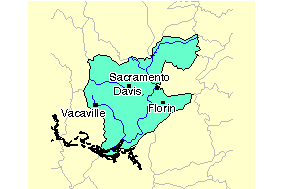 USGS Cataloging Unit: 18020109
USGS Cataloging Unit: 18020109
Lunch
Herb and endive salad with Soul Food Farm egg
Braised grass-fed beef crepinette with Tartine bakery bun, onion rings and dried farmed tomato ketchup
Almond tart
During the afternoon there will be a boat gathering organized by David Wilson in the Seaplane Lagoon just a short walk from St George Spirits
San Francisco Delta Chinook Salmon Run
The second afternoon focused on the plight of the SF Bay Chinook salmon. The dinner was a Chinook salmon dinner without any salmon, pointing to the dramatic transformation of the Bay-Delta watershed and the issues around the collapse of the local salmon population. It mapped the Chinook salmon run form the Golden Gate to the foothill spawning grounds by sourcing produce from farms distributed throughout the SF delta watershed, showing how agriculture and the Chinook share the same territory and resources. It was preceded by a roundtable discussing the Chinook’s habitat and migration showing how it competes with the urban and agricultural water demands.
Oncorhynchus Tshawytscha
How water flows in California and the plight of the Bay/Delta Chinook salmon
Panel
Ed Ueber, Former ocean superintendent for the national park service~Tom Worthington, Partner, Monterey Fish~Lloyd G. Carter, Journalist~Marc Alley, Fisherman~Cynthia Hooper, Artist~Jon Rosenfield, President, SalmonAID Foundation
Dinner
Grilled sardines with Nasturtium pods, Meyer lemon and pickled cucumbers
Cioppino, the traditional San Francisco fish stew, with local fish and shellfish
Sierra persimmon pudding
.
Video by Chris Sollars
.
TheTank
Resource room, library, lounge – detour into TheTank and encounter artists, experts, activists, educators in residency in this restaurant lounge designed for conversation and exploration. Permanent resident Jacques Cousteau will be joined by a rotation of visiting guides to include artists, curators, water experts, panelists from both evenings’ discussions, and fisherman telling tall tales of the sea.
Built by THE PERISH TRUST
Artworks/Installations by Denise King, Travis McFlynn, David Wilson, Lauren Marsden, Sita Bhaumik, Jennifer Kimbell, Jessica Niello, Autochlor, Concrete Works, Hyphae Design Laboratory
Video works by Chris Sollars, Kim Anno, Ricardo Rivera, Cynthia Hooper, Martin Machado, Christina McPhee, Stijn Schiffeleers, Michael Swaine, Kelli Yon
Sound works by James Goode, Jen Boyd, Mark Dolomont, Becky White
Food by Cal Peternell/Chez Panisse, Chris Lee/Eccolo, Chris Kronner/Bar Tartine plus PEKO PEKO, HOG ISLAND, MAGNOLIA BREWERY, BEAUNES IMPORT, FOUR BARRELS and ST GEORGE SPIRIT
Menu design by Sasha Wizansky, printed with Lance Winters, in his letterpress shop at St George Spirits
The Chinook salmon, two jars of pickles and the way the water flows
After spending several years in the open ocean, the Chinook or King salmon comes back to the waters near the Golden Gate where it feeds on sardines, anchovies, herring and krill, preparing for its run up the Bay/Delta watershed where it will spawn and die in the small creeks of the Sierra foothills. For its survival, it must share its territory with what is now one of the biggest agricultural land in the world, the Central Valley of California and share its water with most of central and southern California through a vast and complex system of dams, reservoirs, canals and pumping stations. At the heart of this system is the Sacramento Delta. By engineering new and artificial rivers, large quantities of water which used to flow through the Golden Gate are now diverted as far as southern California for both agricultural use (around 85%) and urban consumption. This huge transformation of the landscape has had a drastic effect on the ecosystem of the salmon, aiding in the collapse of the salmon population. For the last 4 years all commercial fishing has been prohibited in an attempt at restoring stocks.
On Sunday we decided to make a salmon dinner without any salmon. The first course will map a small part of the California water system. The central ingredient is sardines caught off the coast of central California, a salmon’s favorite food; to serve with it we have prepared two different kinds of pickles. For the first jar, we foraged wild nasturtium pods (1) from Lands Ends on the south side of the Golden Gate and wild fennel (1) on the north side marking the start of the salmon run. We used these to flavor pickling cucumbers (2) grown at Lucero Organic Farm which uses water from the Mokelumne river, one of the salmon’s traditional spawning grounds. The Mokelumne river, like many other rivers, has been dammed to control flooding and for storage, diminishing the salmon’s territory. To remedy this the Department of Fish and Game has built the Mokelumne River Hatchery (3). One of the dams, the Pardee dam creates the Pardee Reservoir (4), the principal source of water for the East Bay Municipal Utility district (6) bringing water to Berkeley via the Mokelumne Aqueduct (5). In the second jar we preserved meyer lemons harvested in the Berkeley hills to make a salsa. We will also serve anchovies, another salmon food, caught by Marc Alley, a local fisherman who has not fished for salmon for the last 4 years and is now getting his boat ready for crab season, starting on November 15.
The Mokelumne river water system
.
OPENrestaurant TAKES ON WATER.
November 13, 2010
On November 13 & 14, OPENwater, SFMOMA’s latest collaboration with the artists, chefs, and educators who make up OPENrestaurant, settles down at St George Spirits, a large distillery on the Alameda Naval base, for two days of culinary exploration. Focusing on the Bay-Delta watershed, OPENwater will propose an immersive experience at the confluence of food, water, politics, ecology and art. Through video, a 3D sound environment, panel discussions and more informal encounters with artists, fishermen, biologists and preservationists OPENwater will examine some of the issues at the heart of the California water system.
ADMISSION TO THE EVENTS IS FREE ~ EVERYONE WELCOME
Proceeds from drinks will benefit the Chez Panisse Foundation
Click here for a schedule of events
Click here for directions
There will be bar food and drinks $5/10 and plenty of extra seating
Dinners $65 – lunch $30 by reservation (includes a drink and printed menu)
All food is made on site from local organic ingredients and is subject to change depending on availability. Vegetarian alternatives will be available for all meals
We recommend that you keep an eye on the weather and dress appropriately since the event takes place in the warehouse next to the stills.
Dinner/Lunch: Walk-in welcome depending on availability
If you are having trouble making a reservation on the SFMOMA site try on a different browser or contact us at seed@openrestaurant.org.
.
Click here for the schedule of events
MARINETTED
October 17, 2009
October 7, 2009
.
We intend to sing
the love of danger, the habit of energy and fearlessness.
Courage, audacity, and revolt will be essential elements of our poetry.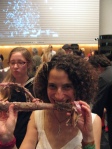
Up to now literature has exalted a pensive immobility, ecstasy, and sleep.
We intend to exalt aggressive action, a feverish insomnia
the racer’s stride, the mortal leap, the punch and the slap.
We affirm that the world’s magnificence has been enriched by a new beauty:
 the beauty of speed.
the beauty of speed.
A racing car whose hood is adorned with great pipes, like serpents of explosive breath—a roaring car that seems to ride on grapeshot is more beautiful than the Victory of Samothrace.
We want to hymn the man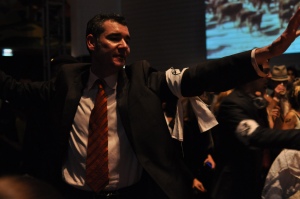 at the wheel, who hurls the lance of his spirit across the Earth, along the circle of its orbit.
at the wheel, who hurls the lance of his spirit across the Earth, along the circle of its orbit.
The poet must spend himself with ardor, splendor, and generosity, to swell the enthusiastic fervor of the primordial elements.
Except in struggle, there is no more beauty. No work without an aggressive character can be a masterpiece. 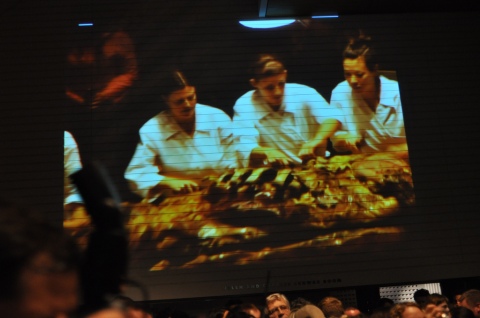 Poetry must be conceived as a violent attack on unknown forces, to reduce and prostrate them before man.
Poetry must be conceived as a violent attack on unknown forces, to reduce and prostrate them before man.
We stand on the last promontory of the centuries!… Why should we look back, when what we want is to break down the mysterious doors of the Impossible? Time and Space died yesterday.
We already live in the absolute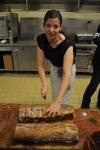 because we have created eternal, omnipresent speed.
because we have created eternal, omnipresent speed.
We will glorify war
the world’s only hygiene
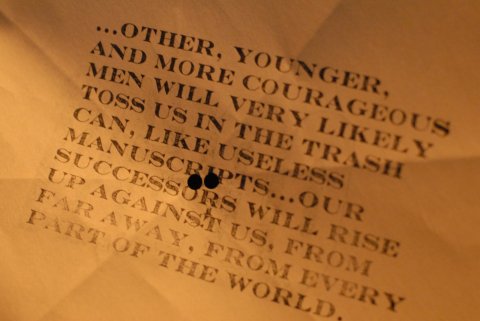 militarism, patriotism, the destructive gesture of freedom-bringers, beautiful ideas worth dying for, and scorn for woman.
militarism, patriotism, the destructive gesture of freedom-bringers, beautiful ideas worth dying for, and scorn for woman.
We will destroy the museums, libraries, academies of every kind, will fight moralism,
feminism
 every opportunistic or utilitarian cowardice.
every opportunistic or utilitarian cowardice.
We will sing of great crowds excited by work, by pleasure, and by riot; we will sing  of the multicolored, polyphonic tides of revolution in the modern capitals; we will sing of the vibrant nightly fervor of arsenals and shipyards blazing with violent electric moons; greedy railway stations that devour smoke-plumed serpents; factories hung on clouds by the crooked lines of their smoke; bridges that stride the rivers like giant gymnasts, flashing in the sun with a glitter of knives
of the multicolored, polyphonic tides of revolution in the modern capitals; we will sing of the vibrant nightly fervor of arsenals and shipyards blazing with violent electric moons; greedy railway stations that devour smoke-plumed serpents; factories hung on clouds by the crooked lines of their smoke; bridges that stride the rivers like giant gymnasts, flashing in the sun with a glitter of knives
adventurous steamers that sniff the horizon; deep-chested locomotives whose wheels paw the tracks like the hooves of enormous steel horses bridled by tubing; and the sleek flight of planes whose propellers chatter in the wind like banners and seem to cheer like an enthusiastic crowd.
 Photos by Charles Villyard, squash and Don Hicks
Photos by Charles Villyard, squash and Don Hicks
OPENfuture
After storing it at Avedano’s , we spit-roasted, a 650 lb grassfed Dexter steer from Green String Farm for 20 hours at Alemany Farm . The cooked steer was then loaded on a trailer pulled by a tricycle, for the 6.7 miles distance and delivered to SFMOMA by bike messengers.
The evening started with Luciano Chessa declaiming a futurist piece from a megaphone until a couple bikers circled the museum’s atrium, the tricycle, then, pulled in and the main course was laid on the custom made butcher-block style table made with wood reclaimed from a 1927 granary in Moscow, Idaho. A blanket woven with aluminum strips for the occasion covering the steer on it’s trip was hung from the balcony. More layers of aluminum foil protecting the steer during spit-roasting were removed as well as a large bunch of fragrant wild fennel filling the cavity of the the carcass.
A group of women carved the animal and the meat was distributed to the different food stations by a conveyor belt. Some of the meat was ground and scooped on top of corn tortilla cones, a reference to the role of corn in the beef industry; the rest of the meat was served as a main course with a topping of mole and bean foam representing oil and methane, two product associated with industrial meat production. We also served a tomato filled with halibut tartar, a nod to the genetic manipulations of tomatoes. This central part of the meal was a reflection on the effect of modernity of our food system. The meal also included toasts with porcinis foraged in San Francisco, a vegetarian stew with produce from urban farms and a red beet terrine molded in the shape of a heart; plus wine from Scribe Winery, custom cocktails and a grappa which distillation involved the roasted tongue, heart and tail of the steer.
At the end of the carving a model of a Piper Pawnee, the plane used by industrial agriculture to spray chemicals, flew over the room and dusted the air with orange flower water that had been infused with orange peels from the orchard of the inventor of Agent Orange. The event ended with the sound of a siren and parachutes holding dessert in the form of paneforte dropped from the rotunda.
The whole event was framed by two large video projections on opposite walls of the atrium, plus a video projection of the steer roasting at night in the adjacent room and an original sound piece.
Special thanks to Avedano’s Holly Park Market, St Georges Spirits, Scribe Winery, Jason /Alemany Farm, Chris Kronner/Bar Tartine, Tartine Bakery, Magnolia Brewery, Ryan Farr, Kelsie Kerr and the carving crew, Howie Correa and the biking crew, Chris Lee and Samin Nosrat, Sasha Wizansky, Leslie Terzian Markoff, Heritage Salvage, Jack Cannard/Green String Farm and the roasting crew, Chris Sollars/video, Matt Volla/sound plus Frank Smigiel, Gina Basso and Jim Weber at SFMOMA and everyone who participated, either cooking, serving, helping out or hanging out.
Read more about OPENfuture at Samin’s blog, EAT ME DAILY, tablehopper, THE EASTSIDE VIEW, SFgate, civil eats.
Video by Hector Escarraman
